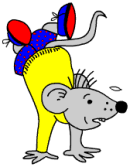
A range of boxes used for packaging such as chocolate boxes, tissue boxes etc, may be opened to see the nets used to construct them. (A net is the 2-D shape that must be cut out and folded to make a 3-D shape.
Children should make 3-D shapes from suitable materials such as straws and pipe cleaners (used to join the ends) or kits designed for the purpose.
In this way, they will be able to see how many of each 2-D shape are needed as faces for a 3-D shape (Eg. six squares are needed to make a cube; a square and four isosceles triangles are needed to make a square based pyramid.)
Many shapes can be made from cubes. Cubes that join together are helpful here, but non-joining cubes are very useful too.
Other properties of shapes will be discovered, such as ‘the number of faces of a prism is equal to two more than the number of edges on one of the end faces’.
Free Y4 maths worksheet: Visualise 3-D objects and make nets
 Plenty of opportunity with these two free maths worksheets to consolidate understanding of subtraction and the use of positive and negative numbers. By year 6 children should find these pretty straightforward although some children do struggle with the concept of a negative number and will always take the smaller number from the larger number even when the question asks for the opposite (eg 1234 – 4321).
Plenty of opportunity with these two free maths worksheets to consolidate understanding of subtraction and the use of positive and negative numbers. By year 6 children should find these pretty straightforward although some children do struggle with the concept of a negative number and will always take the smaller number from the larger number even when the question asks for the opposite (eg 1234 – 4321).